Removing the old wall and installing the new plywood turned out to be a full day project. I started around 10:40am (Sat) and finished around 8pm.
Step 1 was to pull down all the old Masonite siding. There's a reason they don't sell this stuff anymore. While it's not a terrible product, and it CAN last a long time, it needs maintenance (frequent repainting) and most home owners can't be bothered. Face it, people are lazy. As soon as water starts to get into this product, it softens and turns basically into wet cardboard.
I started working from the front of the garage near the worst section. Everything pulled off or simply fell off with little effort.
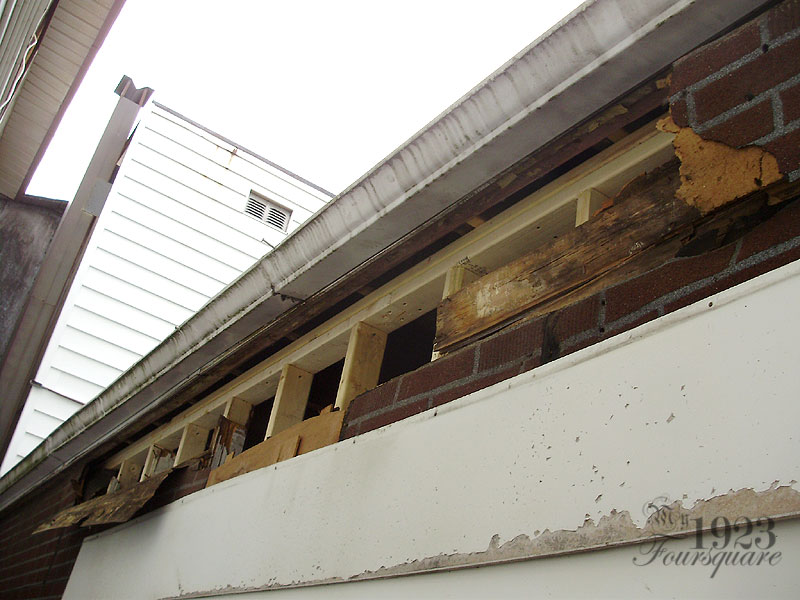
I discovered that under the white Masonite siding was a layer of "Insulbrick" siding. This is similar to the Masonite, but even lighter and fluffier material. It is coated in a waterproof tar on the backside, and the front is regular asphalt shingle. If properly installed, it looks quite convincingly like brick. Under the shingle siding was the tar paper followed by the tongue and groove.


There were two kinds of "Insulbrick" used. The top layer with the lighter lines was much poorer quality than the lower stuff.
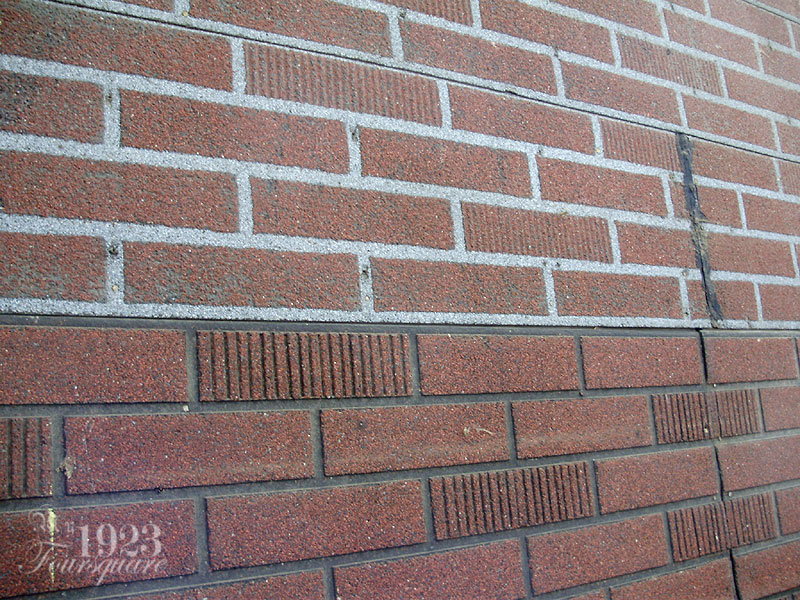

The wall had some poorly patched repairs.

DECAY. These boards could just be pulled off and crushed like dry crackers, It's really amazing that the wall was still holding itself together under its own weight.

Seriously, it just turned into dust and splinters as soon as you grabbed it.

Most of the first half of the wall was also layered with this white mould or fungus growth. Kind of pretty actually. I was wearing gloves.
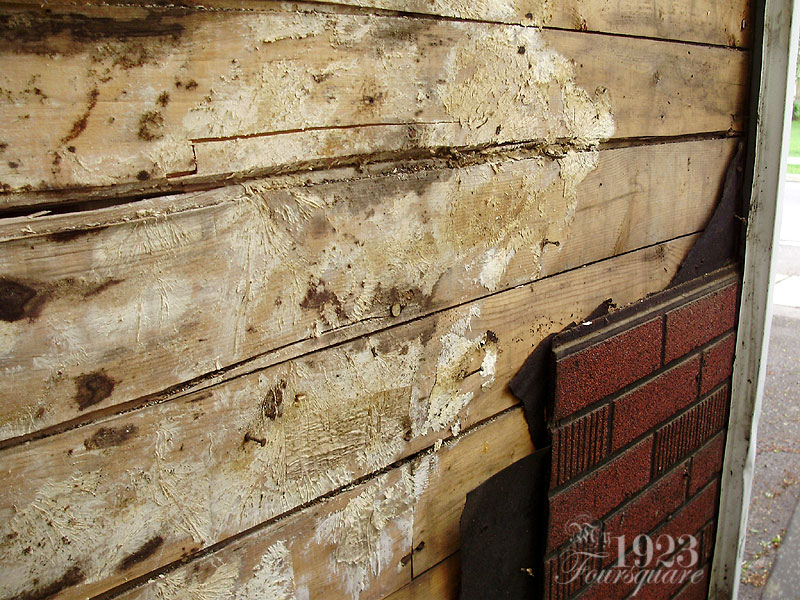

I took the wall apart in sections, and basically as soon as I had free space for the next sheet of 4x8 I would install it. Here was the first sheet installed (1 of 7).
Code requires a minimum of 7/16 (less than half an inch) for sheathing an exterior wall (usually OSB), but I wanted something much thicker and stronger, and I chose 3/4" spruce plywood. Cheap 7/16" OSB sheeting is something like 15$/sheet while the nice thick plywood I used was something around 35$/sheet. It's quite a bit more, but much better. It also matches the thickness of the original tongue and groove, so I'd hopefully have less problems matching-up the front corner because of the thickness.

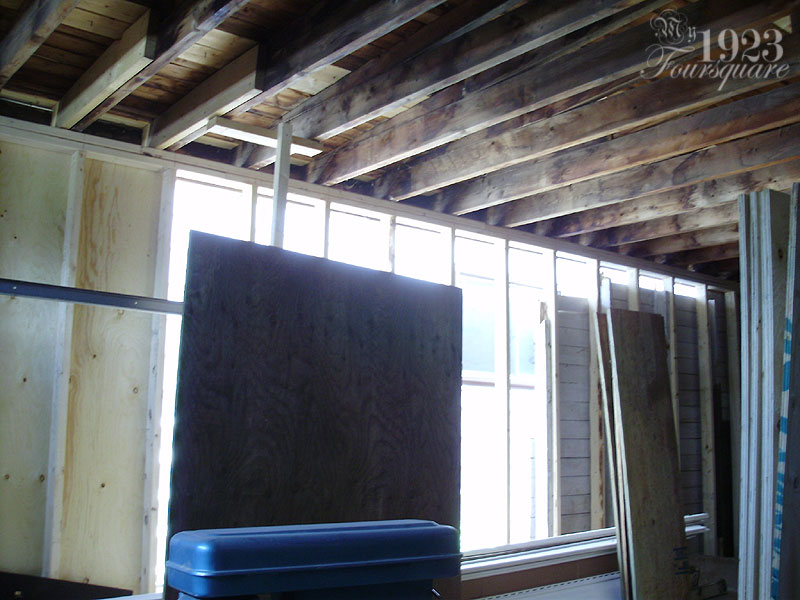
Sheet #2:

One of the big problems with the demo of the old wall was what to do with the trash. I ended up piling the pieces of old siding against the cinder block wall of the neighbour's house (temporarily). For the t-g and all the tar paper, I just tossed it all into the garage along the edge of the wall.

Some of the old t-g was in nice clean shape, and I tried to save as much of it as I could to reuse it for shop/furniture projects. This is nice old-growth lumber which you can't get anymore.
Last sheet!

Not shown was the bottom edge pieces. These were done in 3/4" pressure treated plywood. Not necessary, but I thought that the extra few bucks (about 20$/sheet extra) would be worth it for added moisture protection at the base of the wall.
The following day I removed the old gutter. I t would have been nice to keep it in place, but it was sloped so far down that I couldn't nail the top edges of my 7 plywood sheets. I would also need to rework/fix the fascia, so it had to go.

You can also see how incredibly bad the roof has gotten on the garage. It's leaking in (only) 2 spots, which is surprising, since it's SO INCREDIBLY BAD.

Code requires a waterproof membrane under the siding. This was provided with a layer of Typar house wrap from my favourite lumber/DIY store Emard Lumber (which is where I bought most of my supplies, since they have good prices and offer free delivery in town).

I had to use a 9ft x 95ft roll because their smaller rolls didn't have enough coverage on them. This means I got a nice single piece to cover the entire wall, but I also have an extra 65ft which I can hopefully resell in the local classifieds. All the edges were taped.
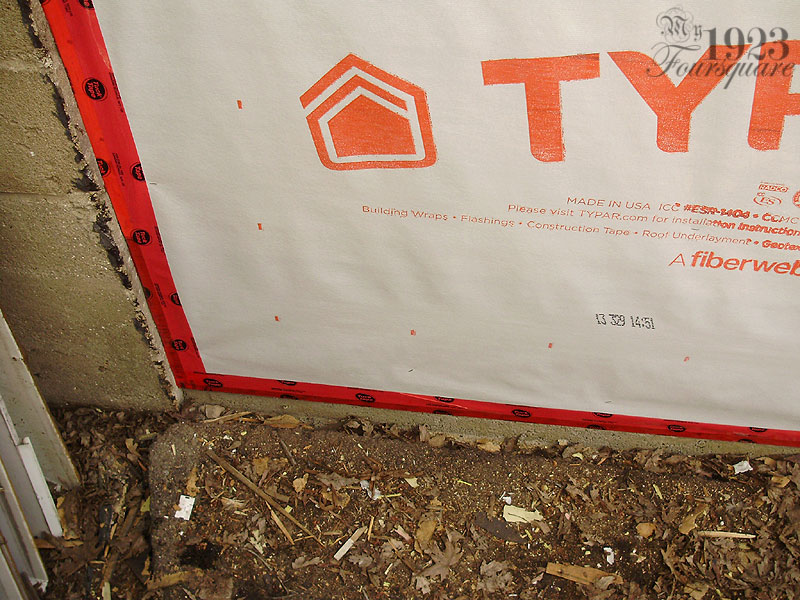
The front edge needed a bit of a Macgyver fix to make things work. I wasn't changing the existing aluminum siding on the front of the garage (and rest of the house) but the corner was sticking out a bit too far (it was originally installed over the Insulbrick). What I ended up doing was I folded the corner in a bit more (aluminum is soft) and I screwed it flat to the plywood with brass screws (the screws had to be waterproof just in case). The new J-trim for the vinyl siding was then nestled into the groove of the aluminum track (see farther down).
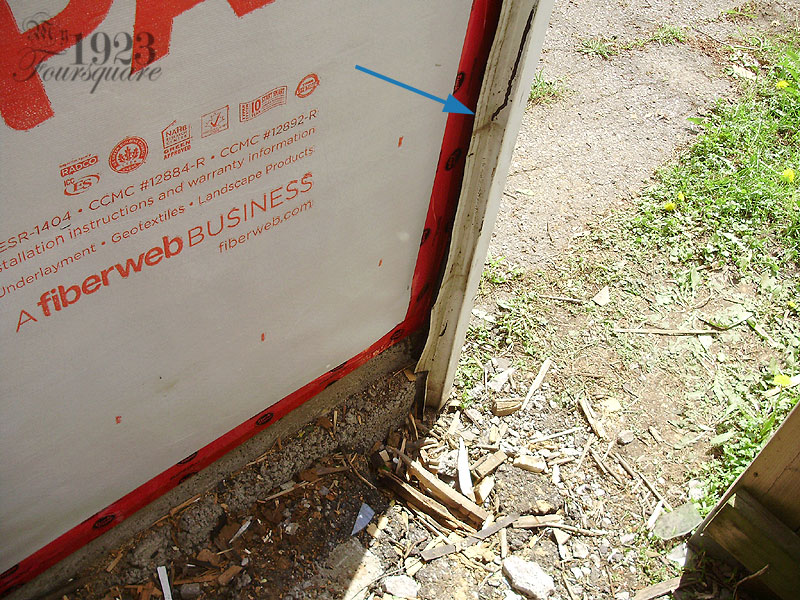
Sorry, no in-between pics. The Typar, taping, gutter removal, and front corner fix was done on day 2 (Sun), with all the J trim and siding installed on day 3 (Mon - which was a holiday).

I love how nicely and neatly the siding landed with the edge of the neighbour's cinder block building.

The front corner has just a HAIR of a curve into the corner, but it's not noticeable.
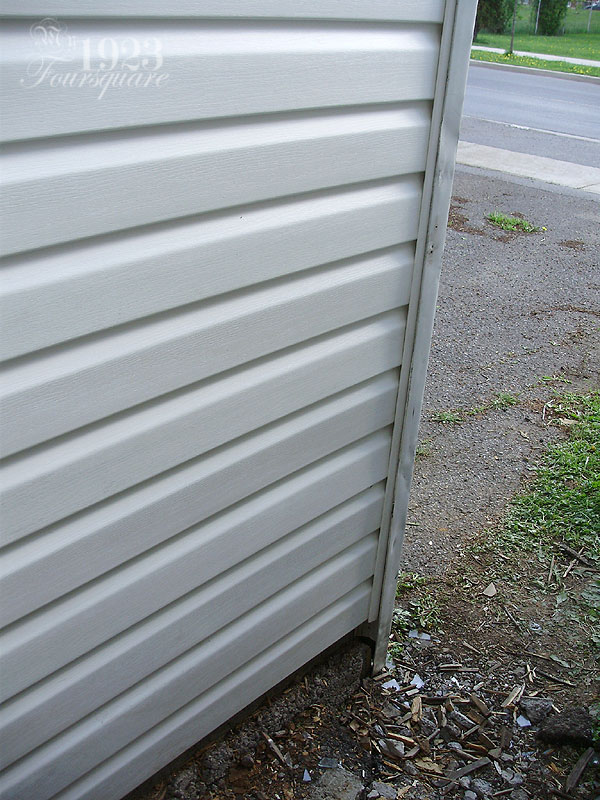
New J-trim into the old aluminum corner. Looks great!
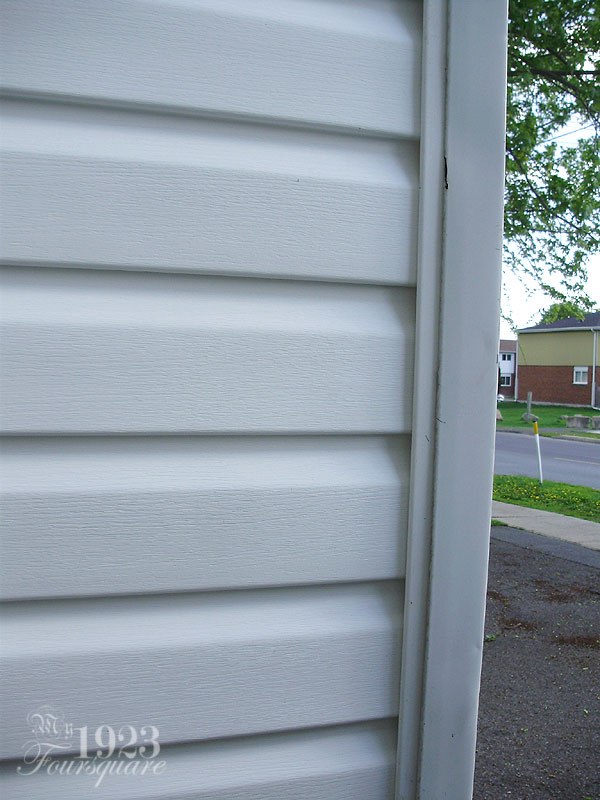
The top is a bit f-ed up, so I want to get that piece with the arrow eventually removed and capped in white metal.
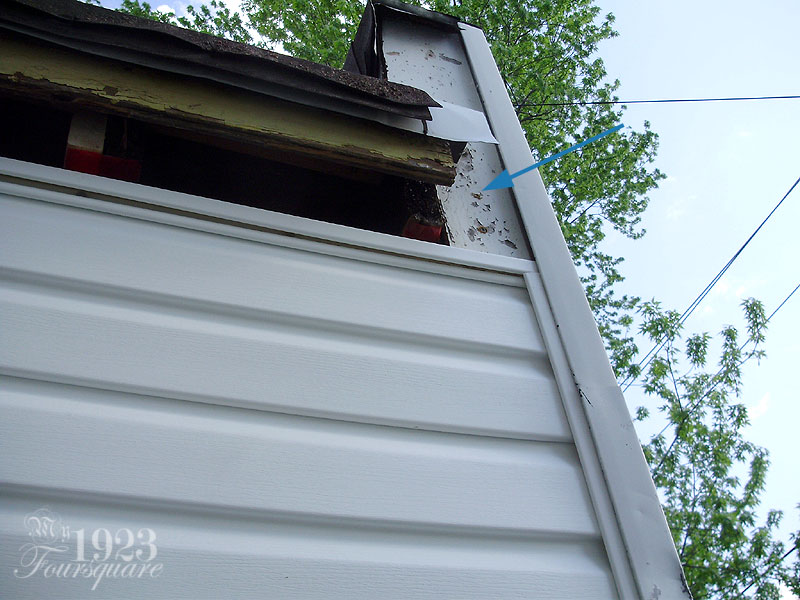
How it looks from the sidewalk:
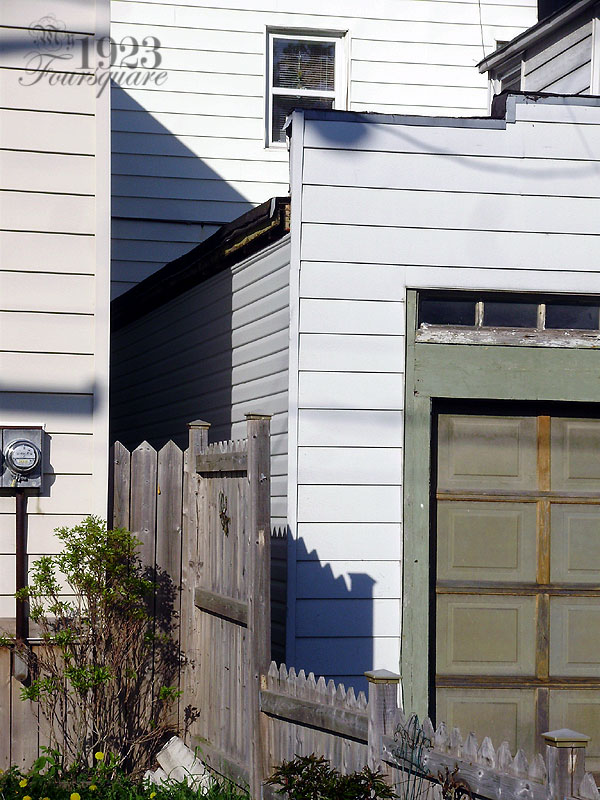
On Tuesday I tackled the fascia/soffit rebuilding. For whatever reason, the entire thing was crooked. There was some evidence that it's always been slightly off (I found some old shims and spacers) but I wanted a nice straight and beautiful repair, so I built-up and shimmed everything that was too short.
I started by installing the bottom pine boards to land with the deepest roof truss end. These were the ones at the far end of the garage next to the other building. As I got to the front, the trusses were short by about 1 1/2 inches. Yikes. To fix this I nailed on additional support boards on each truss to keep the face of the fascia nice and square.

The spots in the centre that were only off by a bit got some flat board shims installed on the ends of the trusses.

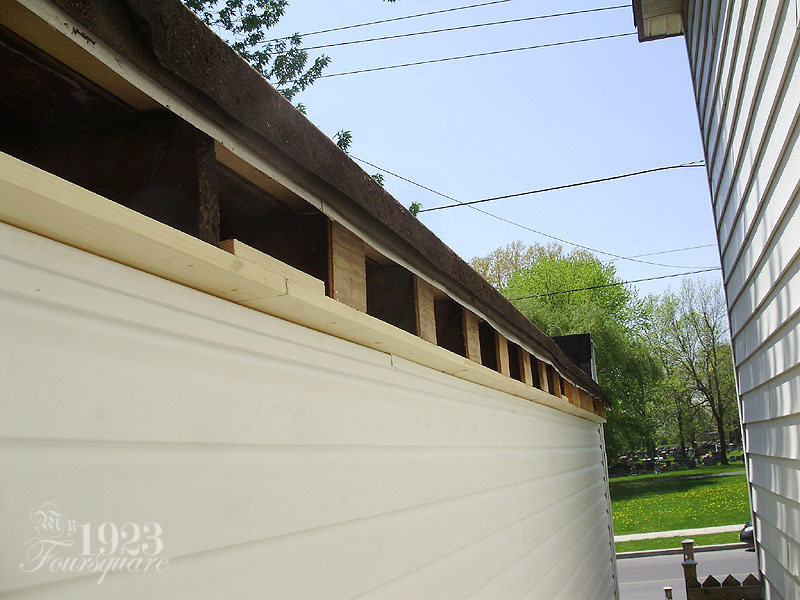
Here is a shot of the "extensions" at the short end.

For the fascia (front board) I used what was left of my 3/4" pressure treated plywood. It looks great, and it's very solid. You can see where the roof truss ends. I will cap this end also.
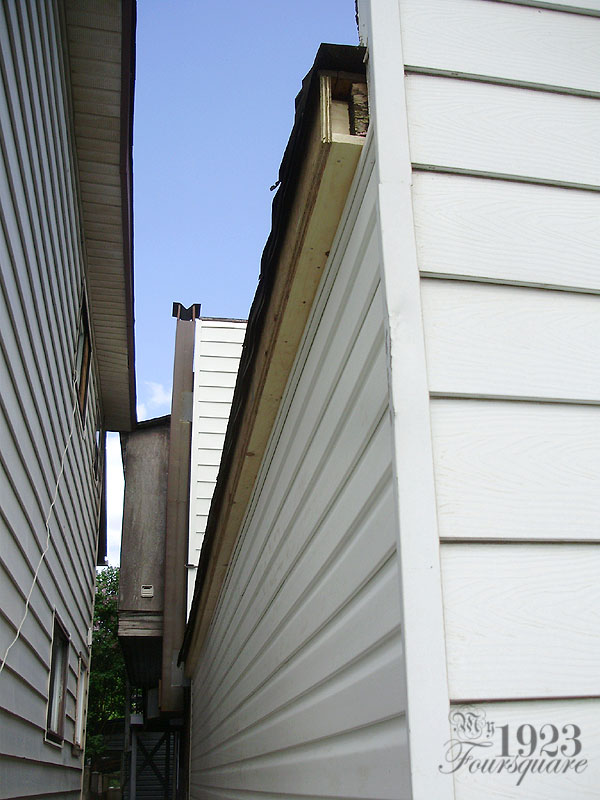

And that's it. Now I need to find a roofing company to redo the roof. The edge of the roof decking (which sticks out and is cut crooked) will need to be trimmed, the fascia will need to be capped in metal, and a new gutter will be installed. I'll keep you all posted.
All that's left for me is to get rid of all the trash. Round 1 was this past Wed. I tied together something like 10-15 bundles of rotted wood boards, tar paper, and stacked all the Insulbrick siding to make it easier for the garbage men.

I still have all the white siding, the vertical (rotted) 2x4s, and the old fascia wood to get rid of. Not to mention that 500lb box of dirt, lol.

That is definitely a project you took on with that garage! I really enjoyed reading your post and appreciate you taking the pictures of the project as you went along. It was cool to watch it unfold and then get put back together. The finished siding looks really good, hopefully the roof re-do went smooth!
ReplyDeleteNice work - I am in a similar predicament with my home and came across your website. It takes a lot of work to keep up on a blog like this - I can tell you take a lot of pride in your work and its nice to document this kind of project for others to admire. I am certain your home will turn out wonderful - a real gem. Good luck - PS - your workbench cabinet is almost too nice to be used for tools!
ReplyDelete